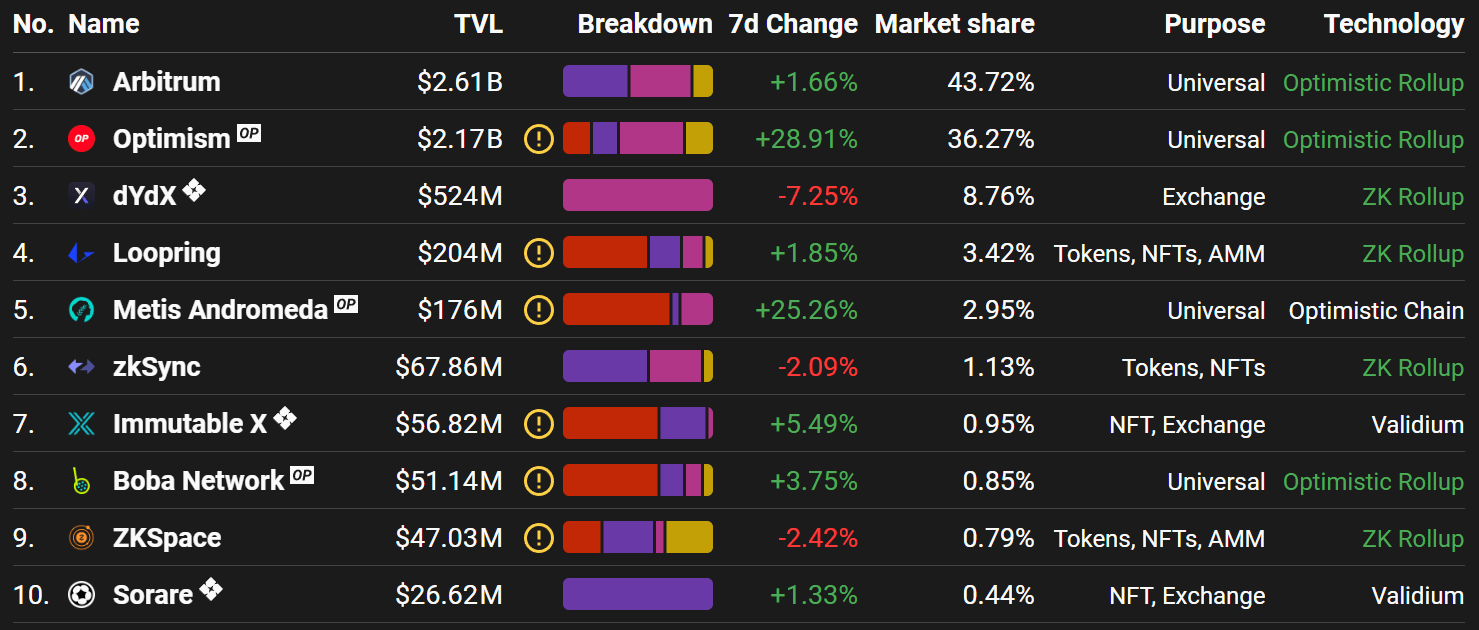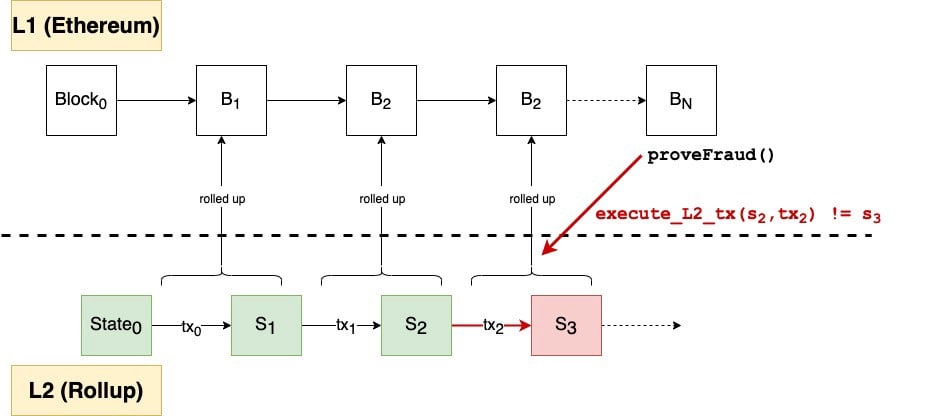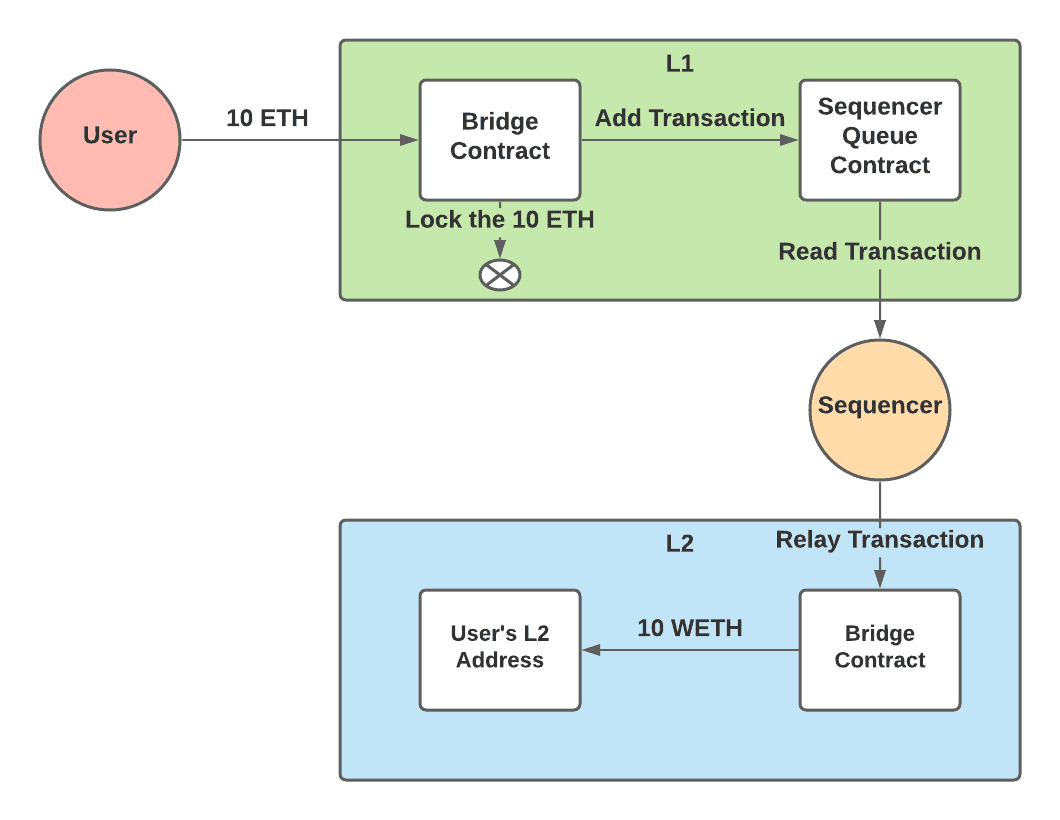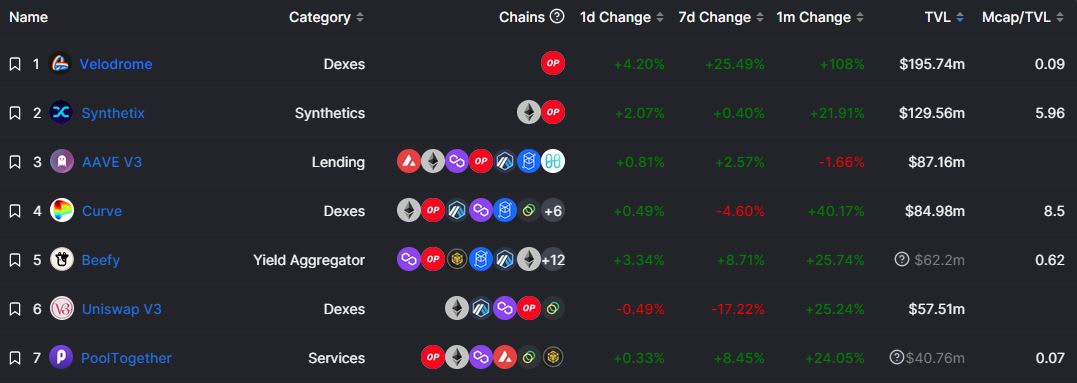Ecosystem or Project Analysis - Optimism
Optimism is a fast, stable, and scalable L2 blockchain built by Ethereum developers, for Ethereum developers. In this dashboard, we analyze and review the optimism blockchain
What is Optimism (✨🔴_🔴✨)?
The breakthrough in blockchain technology stems from its peer-to-peer model. By decentralizing governance and maintenance, blockchain design has enabled permissionless access without central server control. On the other hand, all nodes on the network must sync up with all other nodes to execute every single transaction. This is time-consuming and expensive, making it difficult for blockchains to reach the mass market. Ethereum’s blockchain tackles this scalability problem with Layer 2 networks. One of them is Optimism.
Optimism is a low-cost and lightning-fast Ethereum L2 blockchain.

Why Optimism (✨🔴_🔴✨)? -> Source
Optimism gas fees are 10x cheaper than on Ethereum because of its bundling work also, transactions on Optimism have witnessed a significant increase recently, so for this reason, we will first analyze Optimism and then analyze Optimism on-chain data.Scalability Approaches Explained
Blockchains such as Avalanche, Solana, Algorand, Tron, and others rely on the main chain’s architecture to deal with the scalability problem. This main chain is commonly known as Layer 1, the core network, like Bitcoin or Ethereum, without any extras involved in facilitating transactions. This creates confusion because people start to call some blockchains Layer 1, using the phrase as a distinction tool. However, things are not that simple. Case in point, Avalanche (AVAX) uses a tri-part network architecture. It spreads the traffic load across three chains — C-Chain, P-Chain, and X-Chain — on its Layer 1 main chain to make its network inherently scalable. Because Avalanche doesn’t have to rely on Layer 2 networks, we can then say it is layer 1. Other blockchains, like Ethereum or Cardano, adopt a two-tiered approach to scalability:
In other words, all blockchains are Layer 1 networks, which may at one point adopt the Layer 2 solution to improve scalability. This already happened with Cardano when it introduced Hydra L2 in March 2022. Yet some blockchains have scalability as its core design and it would be more precise to refer to them as Layer 1s.
As the dominant smart contract network with 59% DeFi market share, Ethereum has the widest variety of Layer 2 scalability solutions. As of August 2022, they comprise $6B in total value locked (TVL) across its dApps (decentralized applications).

Top 10 Ethereum scalability solutions -> Source
This is significant because Ethereum’s competitive dApp ecosystems tend to have lower TVLs. This tells us that even if some blockchains are not inherently scaled, their first-mover advantage makes up for it in the form of L2 networks.
Optimism is the first such Layer 2 scaling for Ethereum that lowers its gas fees, conducted through Optimistic rollups. As its name implies, rollups bundle mountains of transaction data to be processed off Ethereum’s Layer 1, after which they are returned in a highly-compressed form.
Some networks use Optimistic Rollups scalability technology, while Optimism itself has its own TVL ecosystem of dApps, at $2.17 billion TVL. That’s because Optimism pioneered scalability for Ethereum, becoming its first Layer 2 network.
Optimism (OP) Explained -> Image Source

What does it mean to scale up Layer 1 networks?
Optimism does this by rolling up transaction data from the main chain, bundling it into single batches, and then settling them. This data is sent back to Ethereum’s mainnet to be validated as another added data block. That last part is critical because it means Layer 2 solutions don’t erode a blockchain’s key feature — security through decentralization.
After all, Ethereum’s 5,000 nodes make a great redundancy layer against network shutdowns or attacks. The same cannot be said of centralized networks, where only a couple of servers need to go down for the entire network to collapse.
When Optimism bundles hundreds of transactions into single batches, the fees required to settle them drastically fall compared to if they had been executed on Ethereum itself. Optimism bundles transaction data with Optimistic Rollups. This cryptographic technique uses smart contracts to serve as bridges between L1 and L2, using a process dubbed “fraud proof”.

Simplified illustration of Optimistic Rollups. Source: Ethereum Foundation’s Kyle Charbonnet
Fraud proofing in Optimistic Rollups is a way to ensure that transactions are valid. During this validation time period, every transaction can be challenged. Optimistic Rollups assume that all transactions are valid until proven otherwise. This is why the term “optimism” defines this scalability solution.
When challenged with fraud proof, Optimistic Rollups run additional computations, which have their own fee expenditure. Thankfully, Optimism reimburses those gas fees.
Speaking of fees, Optimism gas fees are 10x cheaper than on Ethereum because of its bundling work. In fact, the network boasts it has saved users more than $1B in ETH gas fees since it launched two years ago.

Optimism’s dApp Ecosystem -> Source